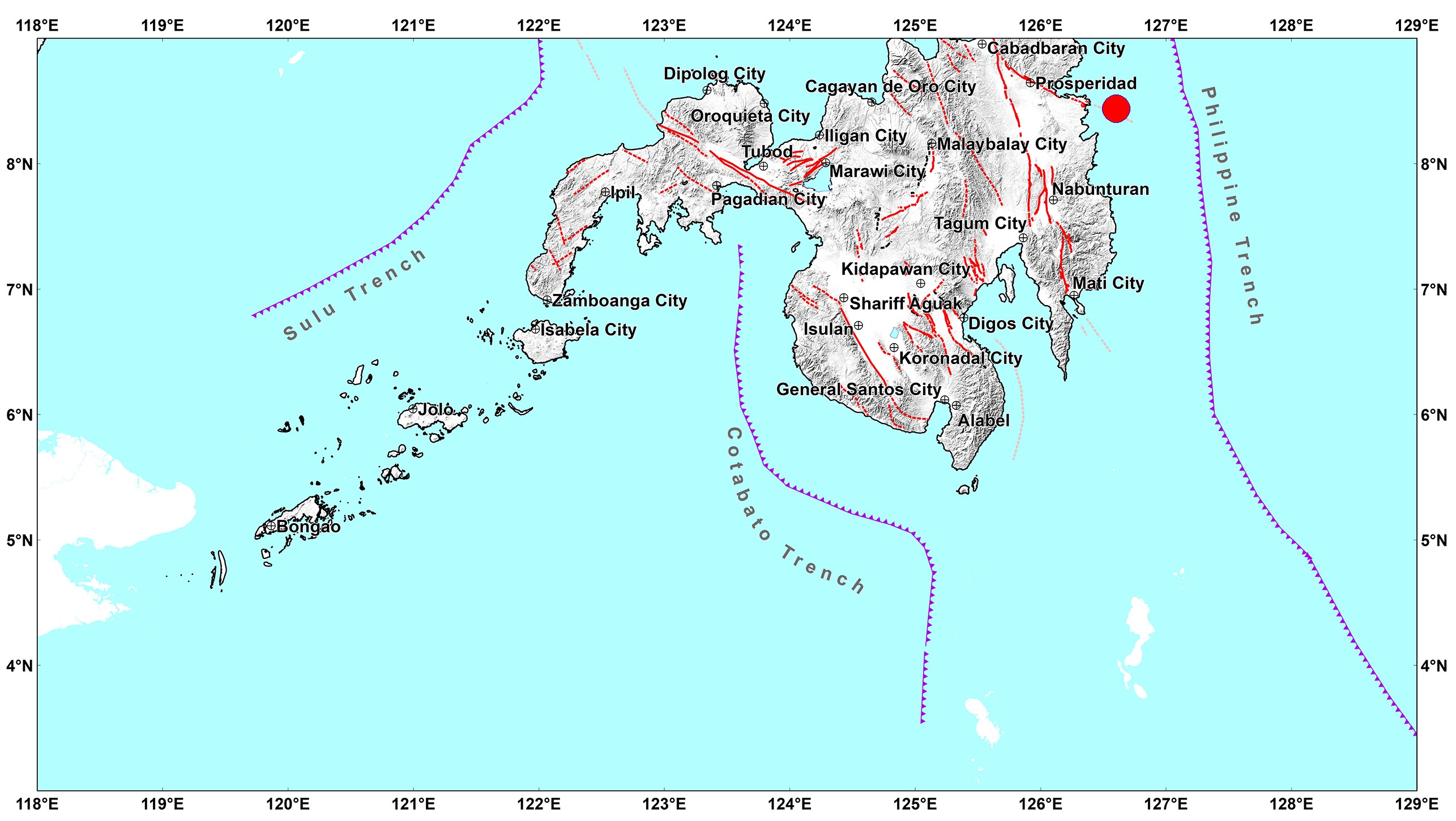Hundreds of aftershocks recorded after powerful Surigao quake

The Philippine Institute of Volcanology and Seismology (Phivolcs) continued to detect aftershocks following the magnitude 7.4 earthquake that struck Hinatuan, Surigao del Sur on Saturday evening, Dec. 2.
As of 10 a.m., Sunday, Dec. 3, Phivolcs recorded 659 aftershocks, of which 122 were plotted by three or more stations.
Seven of these were felt, with the strongest measuring magnitude 6.2.
Phivolcs Director Teresito Bacolcol in an online press briefing on Sunday said the earthquake was most likely generated by the movement along the Philippine Fault.
This, however, is “not related” to the 6.8-magnitude Davao Occidental earthquake on Nov. 17, which was caused by the movement along the Cotabato Trench, he said.
Bacolcol warned the public that aftershocks due to the 7.4-magnitude tremor may continue for the next "few days to a few weeks," but over time, both their number and magnitude will decline.
He added that the aftershocks may no longer trigger a tsunami, as these are of lower magnitude.
Bacolcol pointed out that significant earthquakes had previously struck Surigao del Sur, including those that occurred in 1921 (7.5-magnitude), 1929 (7.2-magnitude), 1952 (7.6-magnitude), and 1992 (7.1-magnitude), all of which resulted in tsunamis.
Read more:
https://mb.com.ph/2023/12/3/phivolcs-lifts-tsunami-warning-after-7-4-magnitude-quake